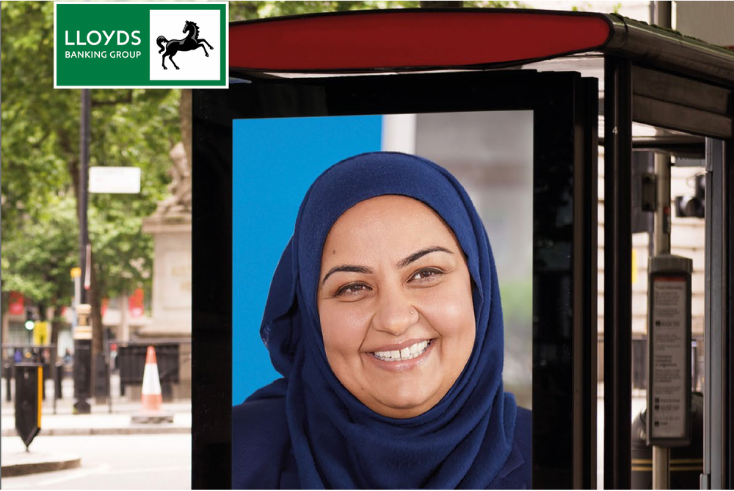Bring on the ethnic horses

Dominic Mills applauds Lloyds Bank Group for its approach to improving inclusion and diversity and reflects on the viewer experience of watching the Euros in France
Call it serendipity, call it coincidence, but for those of us in adland there was a certain piquancy that saw Lloyds Bank Group release its Championing Modern Britain report in the same week that the Euros lifted the lid on our schizoid attitude to race: on the one hand the embrace of a multi-hued, multi-ethnic team by the vast majority, and on the other the reminder that, despite the progress we think we make, a strain of toxic racism remains embedded in a minority.
The Lloyds report, which you can read in full here, lays out its attitude and approach to inclusion and diversity in its communications.
A sceptic might say that a bank trying to ensure that its ads reflect modern, racially-mixed, Britain in all its complexity is a long way down the scale of relevance, and perhaps an example of corporate cynicism from an advertiser whose creative icon is a horse, FFS.
It won’t solve large-scale problems like education, housing, and equality of opportunity and, as the pandemic revealed, differing health outcomes.
That is correct, and not advertising’s responsibility. But the more ethnic minorities see themselves accurately and empathetically represented in advertising, the less likely they are to feel alienated, and the more the rest of us see their presence and full participation in society as the norm.
That can only be good. Changing Britain this way requires action on many fronts, of which advertising is a small but not insignificant one.
Lloyds’s chief customer officer, Catherine Kehoe ends the report by saying “We hope you found this report thought-provoking, or at the very least interesting.”
Damn right I did, and Lloyds deserves the thanks of the industry. It’s a riveting, eye-opening read (not least because Lloyds admits to some of its own errors).
Better than that, however, it’s completely nickable — intentionally and generously on Lloyds’s part — by which I mean any advertiser and agency can learn from it and implement its recommendations.
I won’t dwell in detail on all the recommendations — they fall into eight categories, including positive portrayal, the importance of detail and nuance to convey authenticity, and thinking about the many levels of identity (hair, clothing, music) we all have.
[advert position=”left”]
But the main point I got is that this is far from the tick-box exercise that I suspect many advertisers and agencies currently use, mainly based on numerical or proportional representation. “Yeah, we got this,” advertisers might say, “just count the number of minorities in that ad.”
However, good intentions aren’t enough and, as we know, can pave the road to hell.
Thus, while I as a privileged white male may think minority ethnic representation in advertising has improved significantly, I am blind to negative or stereotypical tropes these ads portray and how irritating or alienating they may be: geeky South Asian kids who love maths and cricket; reggae blasting from giant sound-systems; any Indian celebration involving Bollywood-style dancing; minority ethnics playing minor roles in the ads or that of a lower-paid or blue-collar worker; and words or captions that imply premium products — in this case a Lloyds Premier Account — are for whites only.
It is this sort of attention to nuance and detail that constitutes the hard yards of getting it right, and where I suspect agencies and clients will really struggle.
There’s no simple answer to this because it involves the empathy and understanding that comes from standing in someone else’s shoes.
But there is one way to start, which is by hiring more minorities by both clients and agencies — and, crucially, in the roles and at the seniority levels where they can make a difference — which means getting them up the career ladder.
I don’t know for sure from the census figures, but for all adland patting itself on the back about getting ethnic diversity levels up to around 14% — roughly the national figure — it’s not doing so well on inclusion and much of that ethnic intake is thus at junior levels: therefore unlikely to have much impact on the creative or planning processes.
Until this happens, many agencies and clients may be tempted just to take the easy road with their ads: animals, puppets, cartoon figures, celebs.
As (I hope) they don’t say at Lloyds: “Bring on the ethnic horses”.
The 13-minute ad break
Whether it was the wish to skip all those ad breaks or a preference for Gary Lineker over the Alan Partridge-soundalike Mark Pougatch that gave the BBC a four-one audience win over ITV (approx 24 million vs six million) the previous Sunday night at the Euros final, spare a thought for anyone watching French TV coverage of some of the Euro games (ie me) on TF1, Les Bleus’ equivalent to ITV.
Coverage of games appeared to start approximately 60 seconds before kick-off, while anyone expecting pithy half-time analysis or just the odd action replay would have been sick as a parrot. Of the 15-minute half-time break, 13 were taken up with ads, of which I can remember…hmm..precisely none.
You don’t always appreciate what you’ve got until you haven’t got it. ITV…take a bow. You can be a model of restraint.




